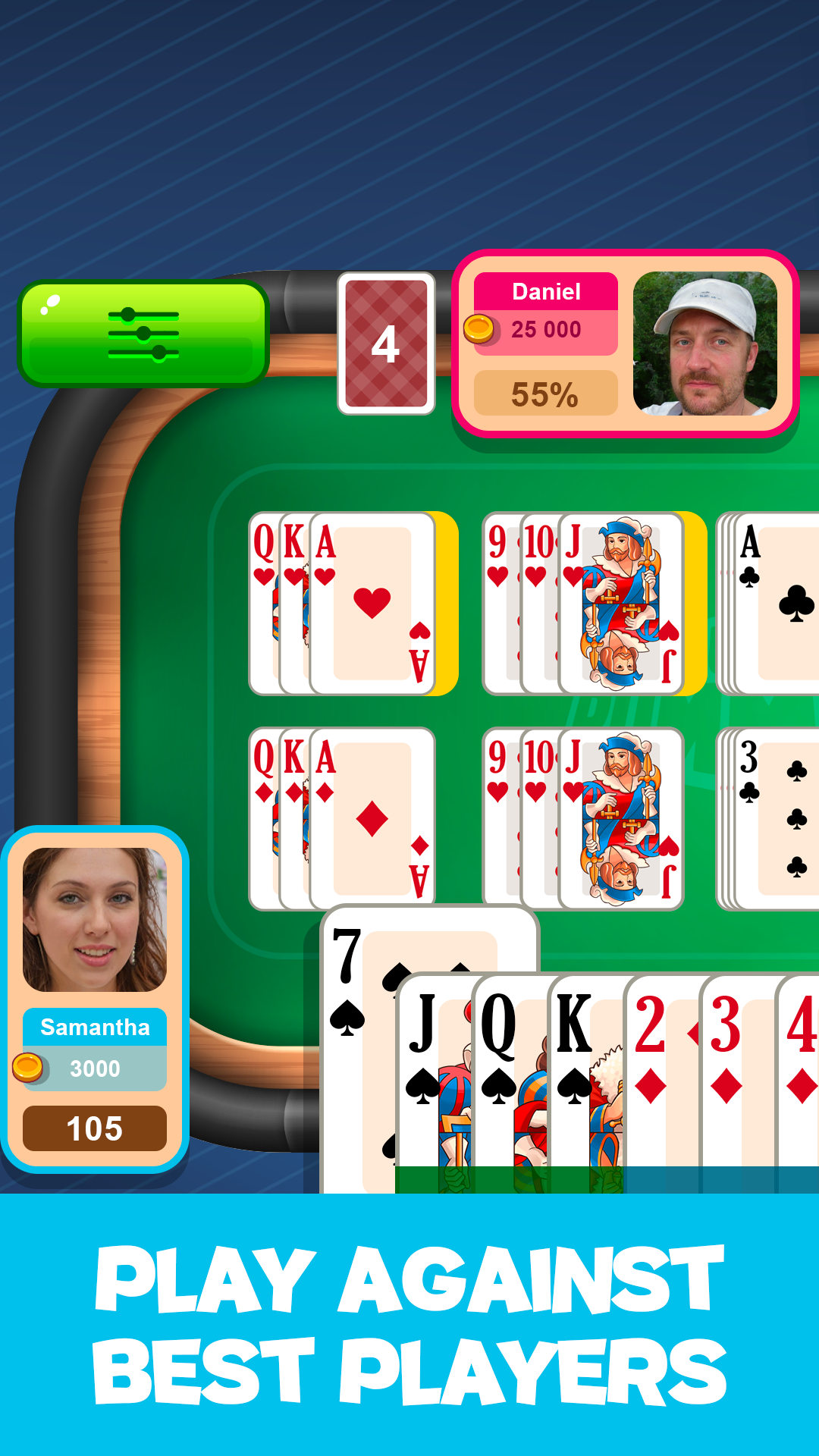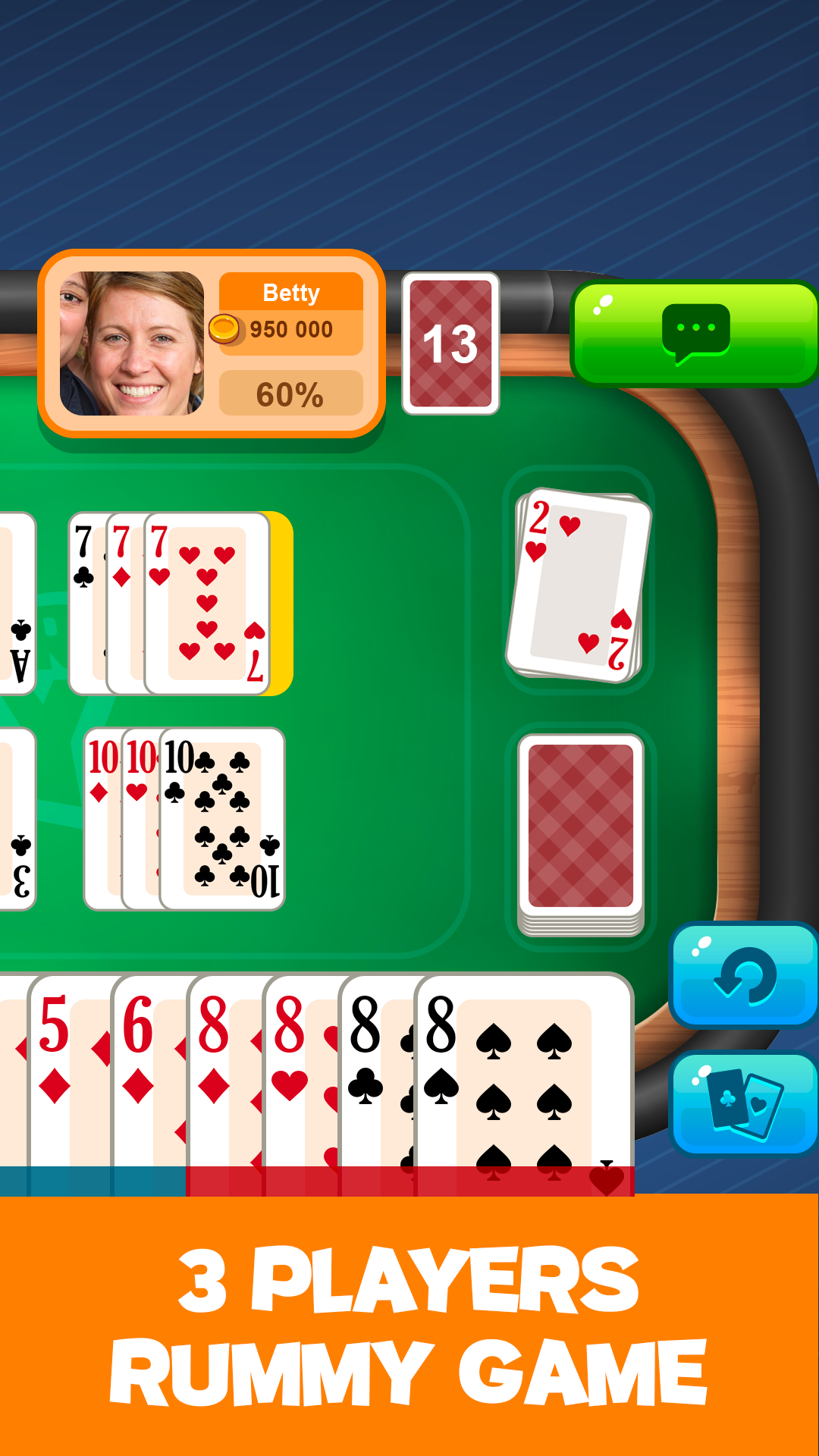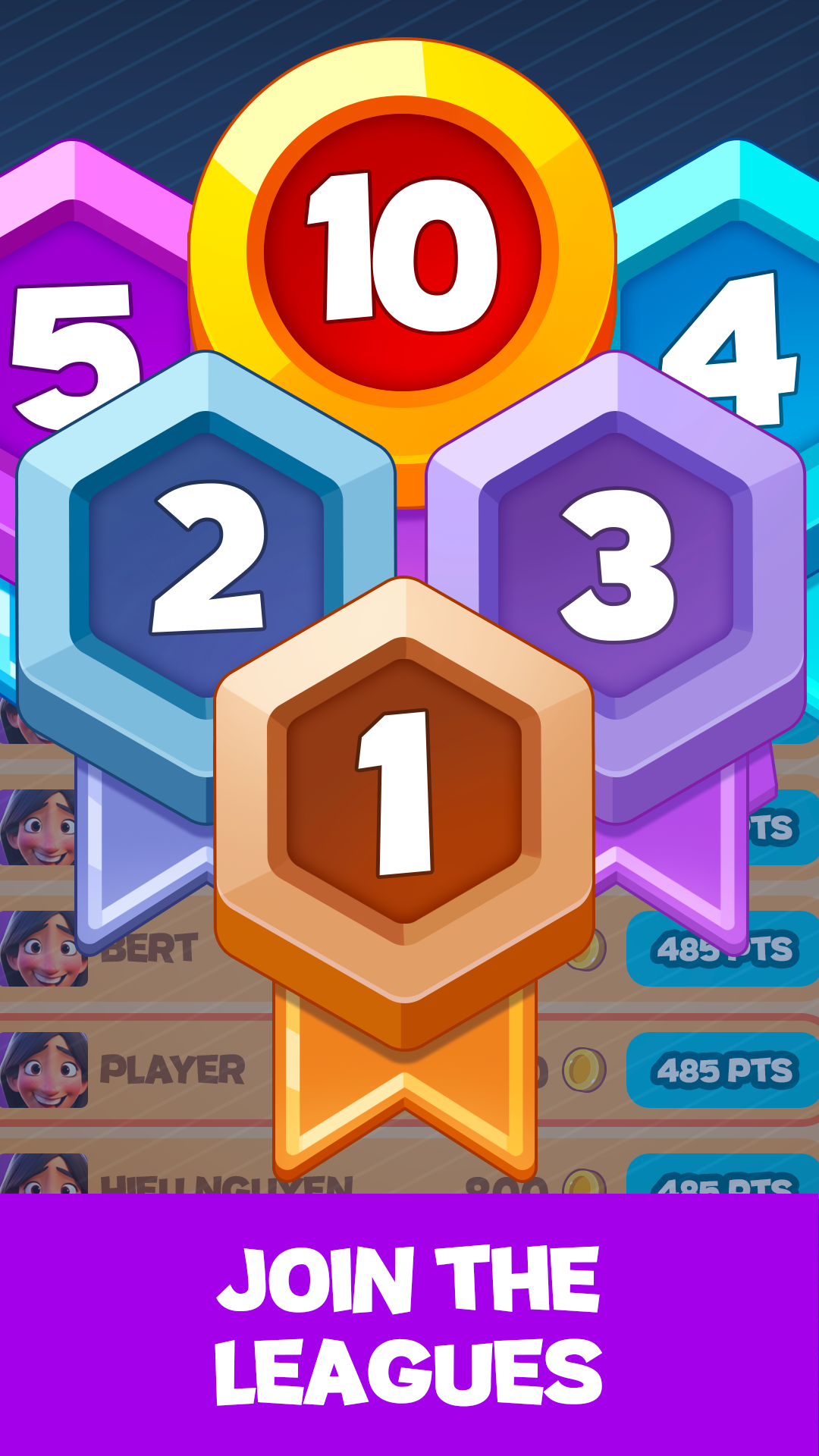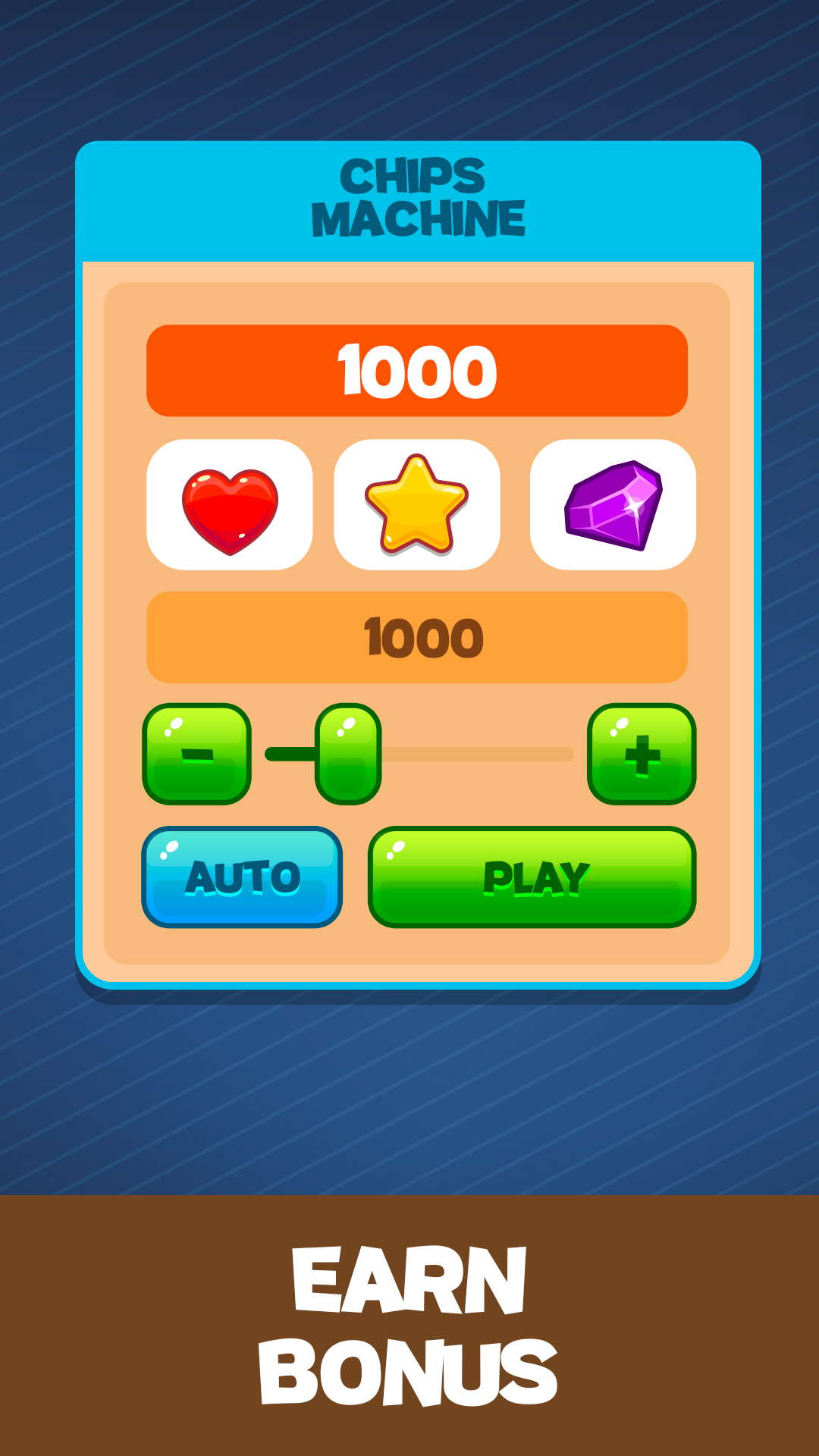




Rummy, known for its flexibility and strategic richness, is more than just an ordinary card game. It's a symbol of conviviality and ingenuity that has been passed down through the ages. Having become popular in 20th century salons, Rummy has adapted to modern evolutions, found both on online platforms and in family gatherings. Whether you are an experienced player, a beginner, or simply drawn to strategy games, this guide offers a comprehensive overview of the rules of Rummy for 3 and 4 players, as well as its fascinating history.
Also join the online tarot games if you are a competitor. For games providing the same thrills, turn to Gin Rummy. In the spirit of competition, try Spades. If however you want a change of scenery, sign up for Backgammon or Online Dominoes
To start, two decks of 52 cards + 3 jokers, are necessary. The objective is clear: to rid oneself of all one's cards through combinations before the others. A player who manages to lay down their cards first ends the round, and the others count the remaining points in their hands. Accumulating the fewest possible points is essential.
Each player receives 13 cards, dealt counterclockwise. The remaining cards form the draw pile, with the first card turned over next to it to start the discard pile. This initial distribution is crucial as it sets the foundations of your gameplay strategy.
The game starts with the player to the left of the dealer drawing from the deck. Players can choose to draw from the draw pile or the discard pile. Choosing a card from the discard pile means having to lay down a combination immediately. If the drawn card does not integrate into your hand, you may simply discard a card. The game continues until a player lays down their last card. If the draw pile is exhausted, the discard is shuffled and becomes the new draw pile.
Three types of combinations are possible:
It is important to note that a card cannot belong to multiple combinations simultaneously. However, it is possible to add cards to combinations visible on the table, thus turning a Set into a Four of a Kind, for example.
The joker is a key card in Rummy, offering remarkable flexibility. It can substitute for any card to complete your combinations. For example, with three 7s and a joker, you can form a Four of a Kind. If you start a sequence with 10-jack-queen-king, the joker can replace the Ace. This 'Swiss Army knife' of card games can therefore become a major asset in your strategy.
To lay down cards, players must wait for their second turn and ensure that the combination reaches 51 points, including a 'natural sequence' (a sequence of at least three consecutive cards). Cards from 2 to 10 are worth their face value, face cards (jack, queen, king) are worth 10 points, and the Ace has a dual value: 11 points if placed after the king, and 1 point in other cases. The joker takes the value of the card it replaces.
The game ends when a player gets rid of all their cards and discards the last one. The other players then count the points of their remaining cards. The Ace is worth 11 points and an unplayed joker 20 points. Face cards are worth 10 points and other cards retain their face value. If a player does not achieve any combination, they score 100 points. The player with the fewest points wins the game.
For beginners, playing with 13 cards is recommended to increase the chances of combinations. Children can learn the game in teams with adults, facilitating their understanding. Exploring different variants of Rummy can also be an excellent way to maintain interest and challenge, especially during long winter evenings.
In Rummy, flexibility is key. It is not uncommon for experienced players to test new variants to spice up the game. Whether by the number of cards, special rules, or even scoring methods, Rummy offers a richness of variations that ensures each game is unique.
Rummy is a card game with simple rules but deep strategies. Whether you are a beginner or an experienced player, there is always something new to learn and ways to improve. Each game is a new adventure, full of surprises and twists. So, gather your cards, invite your friends or family, and dive into the captivating world of Rummy. Who knows, you might become the next grand master of this timeless game?
Although the basic rules remain the same, the number of players changes the dynamics. In a 3-player game, you have more cards and, consequently, more opportunities for combinations. The 4-player game is faster and requires a different type of strategic thinking due to the fewer number of cards.
Three-player Rummy is a fast and dynamic variant. Each player receives 13 cards and the game unfolds similarly to the standard variant, with increased interaction among players.
CombinationsPlayers must form combinations of runs or sets to lay down their cards. A run consists of three or more cards of the same suit in sequence, while a set is a group of three or more cards of the same value.
End of the GameThe game ends when a player has successfully laid down all their cards in valid combinations. Points are then calculated based on the remaining cards in the opponents' hands.
Four-player Rummy is a more strategic version of the game. With only 10 cards per player, the game requires more thought and planning.
CombinationsThe rules for forming combinations remain the same as in the three-player variant, with runs and sets.
End of the GameAs in other variants, the game ends when one of the players manages to lay down all their cards. Points are calculated based on the cards not laid down by the other players.
You know, in Rummy, it's not enough just to play; you need to play smart. And for that, your memory is your best ally. Imagine yourself as a detective, observing every move of your opponent who plays after you. Remember the cards they discard. Why? Because by discarding cards that are useless to them, you complicate their task. It's a bit like playing cat and mouse, where each discarded card is a strategic trap. It takes some effort, but oh, the satisfaction when your opponent sighs in frustration! Developing a strategy around remembering played cards and opponent trends is crucial. Knowing when to hold or discard a particular card, and anticipating other players' moves, can often make the difference between winning and losing. Moreover, strategic use of jokers can turn an apparently weak hand into a winning one.
In Rummy, each spread or discarded card is a piece of the puzzle. Keep your eyes open! Why? To avoid building castles in the air. If a card essential to your combination has already passed, there's no use waiting for it. It's like looking for a four-leaf clover in a mown field. Your vigilance allows you to stay grounded in the reality of the game, to adjust your strategies and to avoid chasing after illusions.
The Jokers are the jewels of Rummy. But beware, don't waste them! Wait until your hand is clearly defined. It's a bit like waiting for the perfect moment to play a trump card in a card game. A well-placed Joker can transform an ordinary hand into a master stroke. Use them sparingly and at the right moment, and you will see, your game will take on a whole new dimension.
Using a Joker to form a Set rather than a Sequence is a pro tip. Why? Because it's more difficult for opponents to take over a Set with a Joker. It's a bit like building a fortress around your treasure. And if you can create a Set identical to another already in play, it's the jackpot! It's like having a double joker in your sleeve, ready to be played at the ideal moment.
If the game drags on and your hand stagnates, it's time to lay down some combinations. Why? To not be caught unprepared with a full hand at the end. It's like securing your assets before an unexpected storm. Even minor combinations can reduce your losses and keep your game in the running. It's about finding the balance between patience and strategic action.
Do you feel the end of the game approaching? It's time to play strategically. Getting rid of your high-value cards and using your Jokers wisely can be crucial. Imagine that each high-value card is a heavy weight in your backpack, and each Joker, a precious pearl. You don't want to be caught with a too-heavy bag if the game ends abruptly. So, lighten your load and use your pearls wisely. It's like making a final sprint by lightening your load, to cross the finish line with ease. This requires anticipation and agility, but it's a skill that can turn a certain defeat into an honorable end to the game.
Rummy, which appeared at the beginning of the 20th century, is the result of the evolution of older games like Conquian. Its exact origin is unclear, but it is generally accepted that it evolved from popular card games in Asia and the Middle East.
Over the years, Rummy has experienced numerous variants, adapting to the cultures and preferences of players around the world. Versions like Gin Rummy and Indian Rummy have added diversity to the game.
With the advent of the Internet, Rummy has easily adapted to the digital world. Many online platforms now allow playing Rummy with players from all over the world, adding a social and competitive dimension to the game.
Today, Rummy remains one of the most popular card games, appreciated for its simplicity and strategic depth, capable of bringing people together around a table or a screen.
In the world of Rummy, an action is anything you can do after drawing a card: lay down combinations, add cards to those already in play, or exchange a joker. Each round starts with this crucial first step.
Adding CardsIt's the art of strengthening your existing combinations with cards from your hand, but be careful, only after your first lay down. These small additions must respect the rules of valid combinations.
AceThe ace, a chameleon in the game of Rummy: it's worth 11 points if it follows the king or if it ends in your hand, but just one point if it opens a sequence. A real joker up the sleeve, but without the costume!
French Playing CardsRummy is primarily played with classic French playing cards: aces, 2 to 10, and royal figures - jack, queen, king. These values come in four suits: spades, hearts, diamonds, and clubs. With two of each card and a few jokers, the game goes up to 110 cards. And for the adventurers, there are regional variants with just as exotic cards!
Numbered CardsThe humble servants of the game, ranging from 2 to 10, distinct from face cards and aces.
RankingThe order of precedence in Rummy, going from the ace, 2, 3... up to the king, and sometimes, the ace makes its return!
CombinationThe beating heart of Rummy! These groups of at least three cards can be sets (same rank) or sequences (consecutive rank). Their laying down is the essence of the game.
SuitThe French cards are adorned with four pretty colors: spades, hearts, diamonds, clubs. In Rummy, the suit is queen: it unifies sequences and diversifies sets.
DiscardThe little graveyard of discarded cards. Each player feeds this pile after their turn, throwing a card from their hand into it. It's also a hidden treasure for clever players!
Face CardsThe nobles of the game: jacks, queens, and kings, each worth ten points. They add a touch of majesty to your combinations.
Traditional GameThe classic Rummy is played with 13 ranks, two cards per rank and suit, plus six jokers, totaling 110 cards. It uses French playing cards, comprising aces, numbered cards, and face cards, spread across four suits: spades, hearts, diamonds, clubs.
Reduced Game (Special Rule)A minimalist version of Rummy, played with a single deck of French playing cards and three jokers, totaling 55 cards. For duos, each receives ten cards; for larger groups, seven cards per player. The 'No First Lay Down' rule automatically activates.
JokerThe chameleon of the game, capable of substituting for any missing card in a combination. Beware, it takes the value of the card it replaces. Replacing a joker with the appropriate card is possible, but only after your first lay down. In hand at the end of the round, it costs 20 points.
Strict Jokers (Special Rule)Here, jokers are subject to strict rules: they cannot be discarded or have two consecutively in a combination. Replacing a joker in a set requires that the set be complete (four cards). The joker must be played immediately after replacement.
No Jokers (Special Rule)A streamlined variant: all jokers are removed, leaving 104 cards in play.
DrawThe hidden treasure of the game! After distribution, the remaining cards form the draw pile, from which players draw at the beginning of their turn. If it is exhausted, the round ends without a winner.
PointsSee 'Scores' for details.
Lay DownThe act of playing cards to create sets or sequences, proudly displayed on the table.
First Lay DownThe first big step in a round of Rummy: your initial lay down must reach a score of at least 30 points, via one or more combinations.
RummyThe name of the game, but also the victory cry of the player discarding their last card and winning the round!
Dry RummyAn achievement where you lay down all your cards in one turn without anyone else having laid down. Your points are then doubled for this feat.
Replace a JokerIf you hold the card that a joker represents in a combination on the table, you can exchange it for the joker. This is only possible after your first lay down.
ScoresEach card has its own value: numbered cards are worth their rank, face cards 10 points, the ace varies between 1 and 11 points depending on its position, and a joker in hand costs 20 points. At the end of the round, these points determine the players' scores.
SequenceOne of two forms of combinations in Rummy, composed of 3 to 13 cards of the same suit in consecutive order. The ace can start or conclude a sequence, but cannot be inserted between two cards.
SetThe other form of combination in Rummy, including trios and quartets, that is three or four cards of the same rank but of different suits. Each rank, except for jokers, can form a set.
SuiteSynonymous with 'Sequence'.
TurnYour moment to shine! After your predecessor's discard, draw a card and play your combinations. You can also add to existing combinations or exchange jokers, but don't forget to end with a discard.